Содержание
- 2. DATA SETS CLASSIFICATION By number of variables there are for each elementary unit (=people, companies, countries,
- 3. Univariate data – just one piece of information for each item. We can summarize basic properties
- 4. LEVELS OF MEASUREMENT Nominal-level variable has values that show difference that subjects have on the characteristic
- 5. QUANTITATIVE DATA (NUMBERS) Discrete quantitative data can assume values only from a list of specific numbers.
- 6. Grouping statistical data A data class is group of data which is related by some user
- 7. Grouping in Excel I.e. you have a raw set of data in excel. You have numbers
- 8. SPSS data grouping We want to group income by less than 25, 25-49, 50-74, 75 and
- 9. We can select scale or ordinal variable to bin them. Binning=take two or more contiguous values
- 10. We can select “Equal with Intervals” and put in First Cutpoint Location, Number of Cutpoints and
- 11. We can make labels if we want and choose to exclude or include the last number
- 12. DESCRIPTIVE STATISTICS Measures of central tendency - identify the most typical value or best representative of
- 13. Descriptive statistics: Nominal level Central Tendency – mode (the most common value of the variable) Dispersion
- 14. Descriptive statistics: Ordinal level Central Tendency – mode + median=the one in the middle=half the cases
- 15. Descriptive statistics: Interval level Central tendency: mean [=average] +Weighed Average Dispersion – Standard Deviation Sx= Variation
- 17. Average in Excel: Insert-Function-Average-Enter Weighed average for named columns, where a is weights column: SUMPRODUCT (a;b)/Summ(a).
- 18. SPSS Summary measures for categorical data Go Analyze – Descriptive Statistics - Frequencies
- 19. Choose variables, press ok and you get your frequency table
- 20. To graphically display press Charts and select the ones you like
- 21. Summary measures for scale variables in SPSS * Go Analyze-Descriptive Statistics-Frequencies * Choose variables * Click
- 22. * You get the data in the viewer window * Go back to frequencies dialog, click
- 23. Summary with grouping variables in SPSS Analyze – Reports- Case Summaries
- 24. * SELECT THE VARIABLE TO BE SUMMARIZED AND A GROUPING VARIABLE, * DESELECT “DISPLAY CASES” AND
- 25. SELECT MEAN, MEDIAN, MINIMUM, MAXIMUM (or any other you might need) * CLICK CONTINUE AND CLICK
- 26. * YOU GET THE DATA GROUPED BY THE VARIABLE. * ALL THE DESCRIPTIVES ARE GIVEN FOR
- 27. * YOU CAN ALSO LAYER YOUR DATA USING SEVERAL VARIABLES: * ANALYZE-COMPARE MEANS - MEANS
- 28. * ADD THE VARIABLE YOU WANT TO EXAMINE TO “DEPENDENT LIST” * ADD THE VARIABLES YOU
- 29. WHAT YOU GET Data, grouped by two variables. You get info bout hourly salary, grouped by
- 30. You can also select certain cases that follow the rule you choose (using if=, if> and
- 31. One-way ANOVA (Means comparison) as a Bivariate Descriptive Statistic Data-Weight Cases Analyze-Compare Means-Means Choose Statistics you
- 32. Graphical visualization in Excel and SPSS Column charts - used to show amounts or the number
- 33. Graphs Can show continuous change of values over time on the same scale. Are perfect for
- 34. Pie-charts They are used to chart only one variable at a time. As a result, it
- 35. Secondary pie chart and secondary histogram show data regarding one of the sectors of a pie
- 36. Bar charts Are almost the same as histograms, they illustrate comparison of different elements These are
- 37. Area chart Area charts are much like line charts, but they display different colors in the
- 38. XY (scatter) charts Scatter charts show the relationships among the numeric values in several data series,
- 39. Stock charts Most often used to illustrate the fluctuation of stock prices. However, this chart may
- 40. Surface charts A surface chart is useful when you want to find optimum combinations between two
- 41. Doughnut charts Like a pie chart, a doughnut chart shows the relationship of parts to a
- 42. Bubble chart Bubble or bubble with 3-D effect Both bubble chart types compare sets of three
- 43. Radar chart Radar charts compare the aggregate values of several data series. Radar charts display changes
- 44. SPSS has the same graphical visualization types plus a boxplot option. A boxplot shows the five
- 45. Graphical visualization in SPSS
- 46. * Add variables, dragging them from the variables list to the canvas. * Choose graph type
- 47. I.e. you drag Job Satisfaction to X axis, Household Income to Y axis, choose the type
- 49. Скачать презентацию


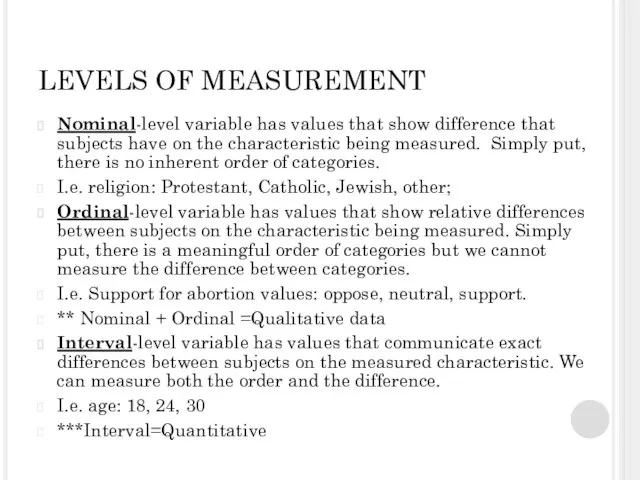
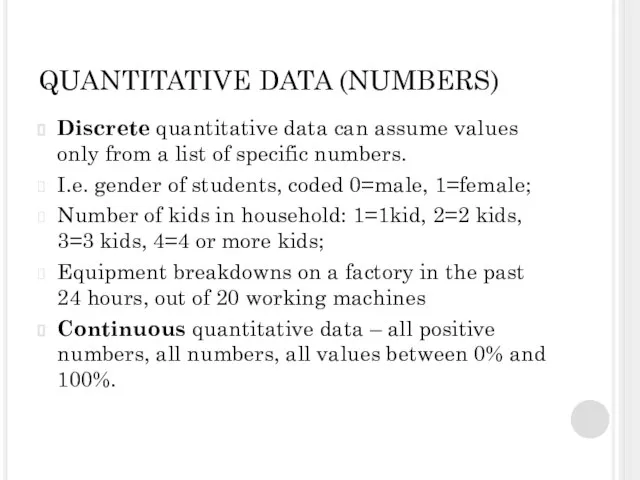
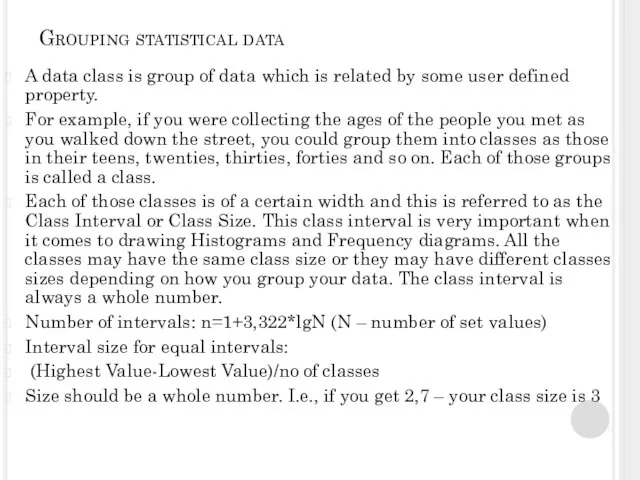

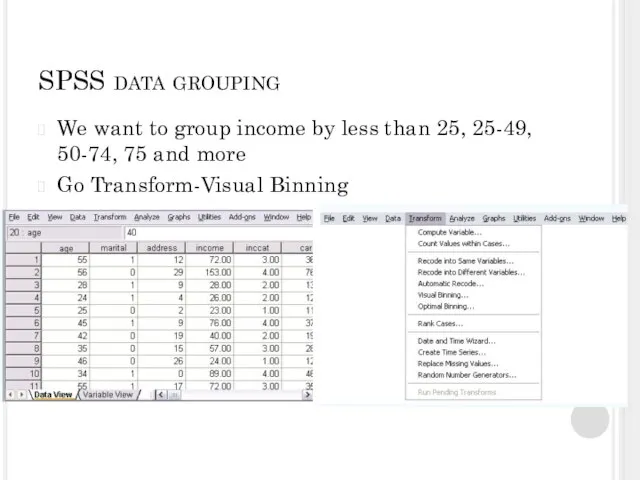


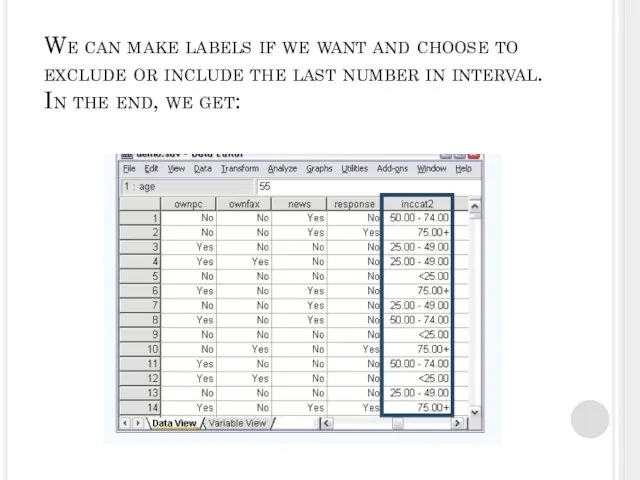
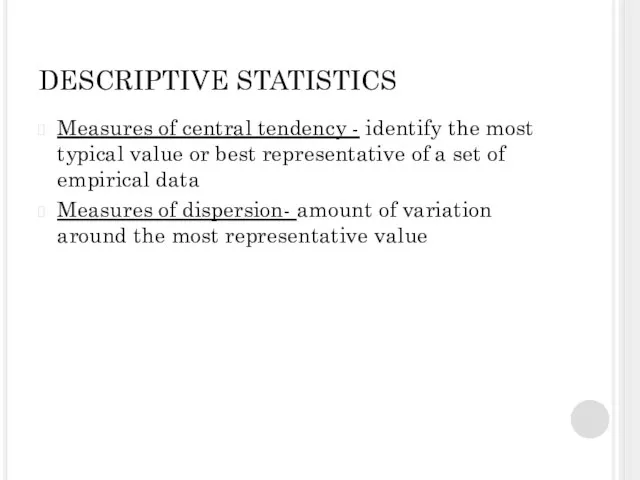

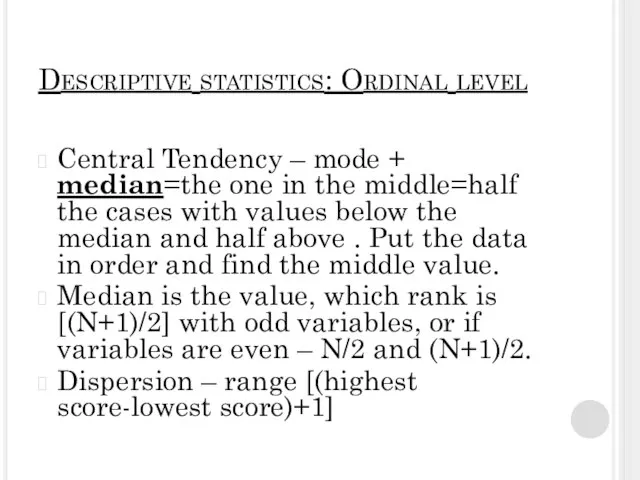
![Descriptive statistics: Interval level Central tendency: mean [=average] +Weighed Average Dispersion –](/_ipx/f_webp&q_80&fit_contain&s_1440x1080/imagesDir/jpg/379041/slide-14.jpg)
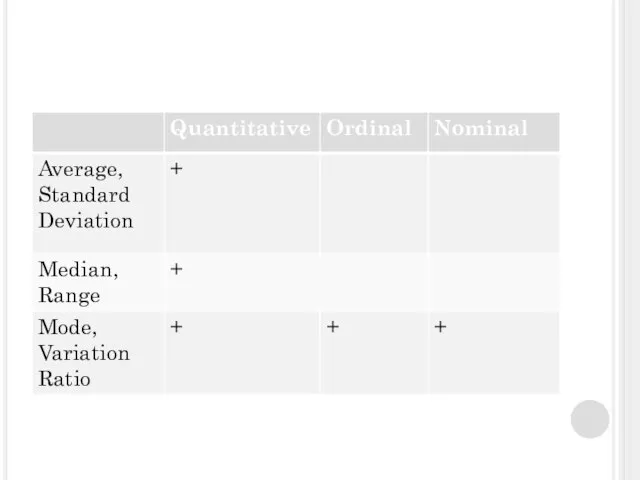
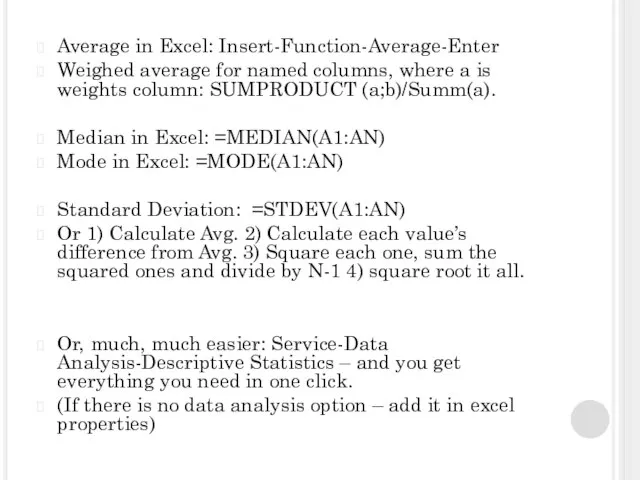


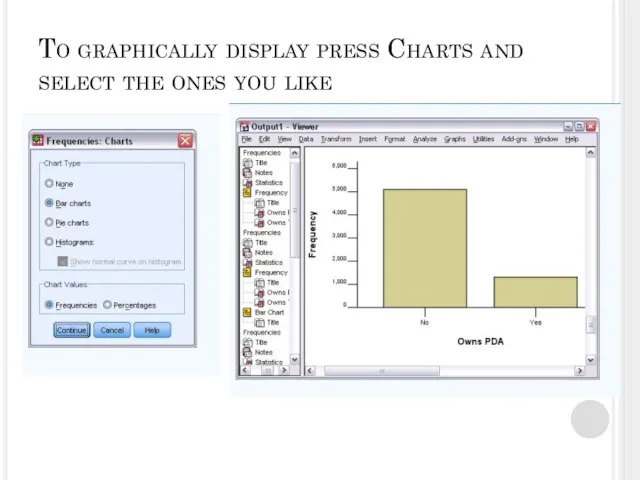
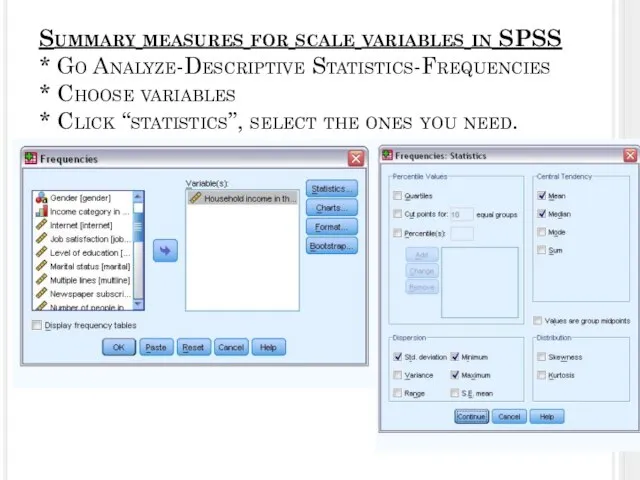

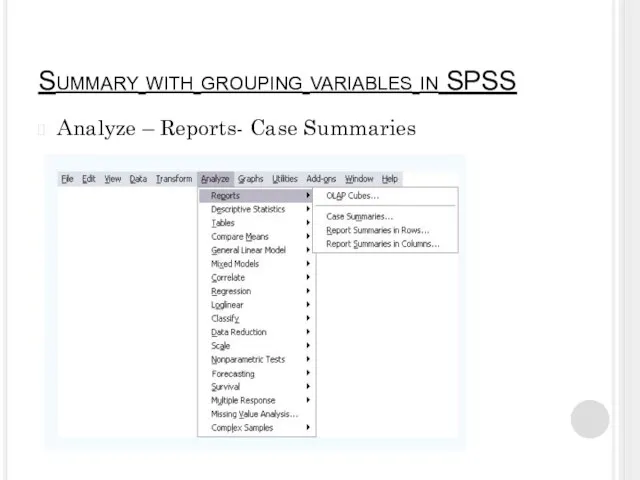
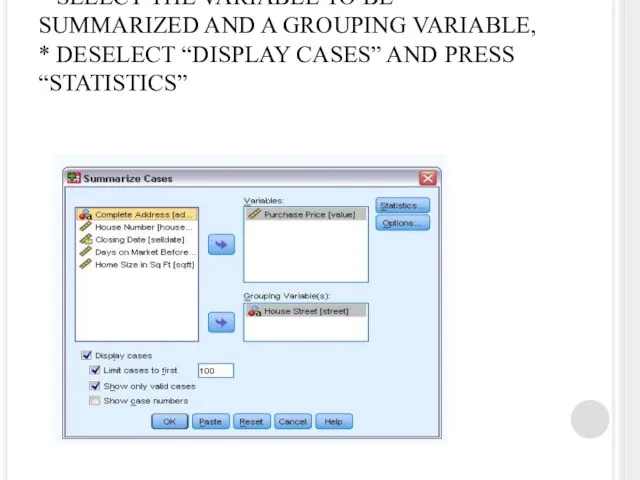
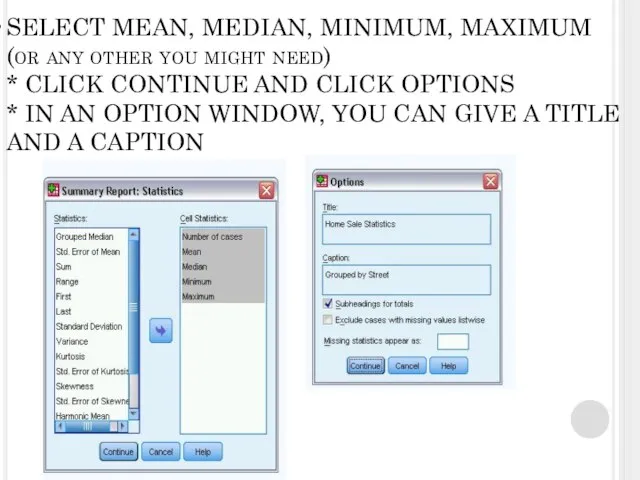

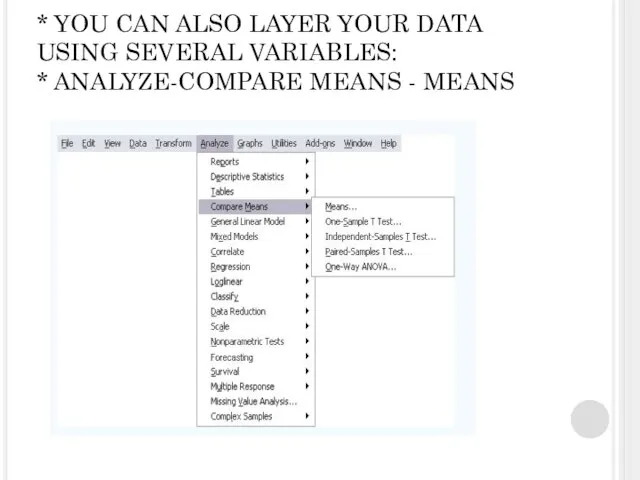

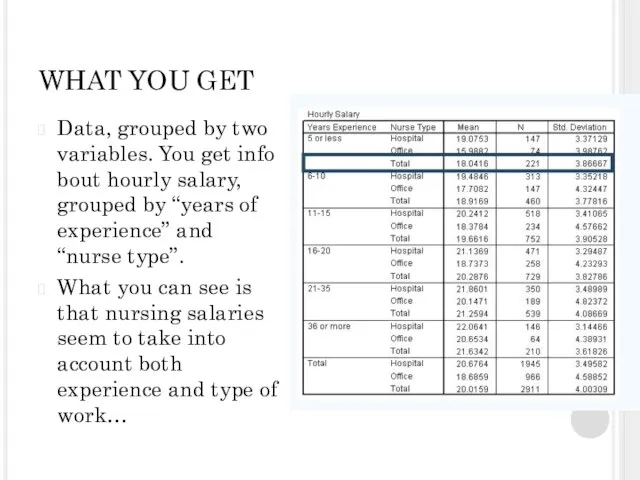
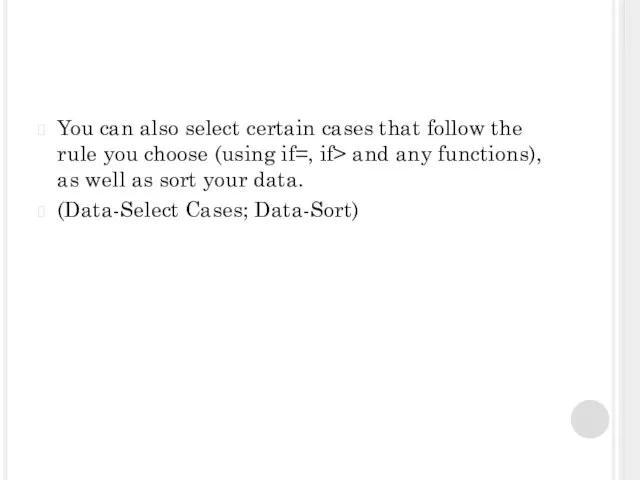
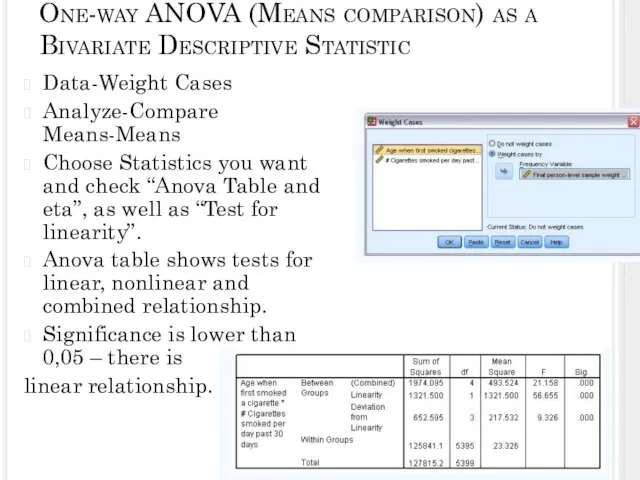

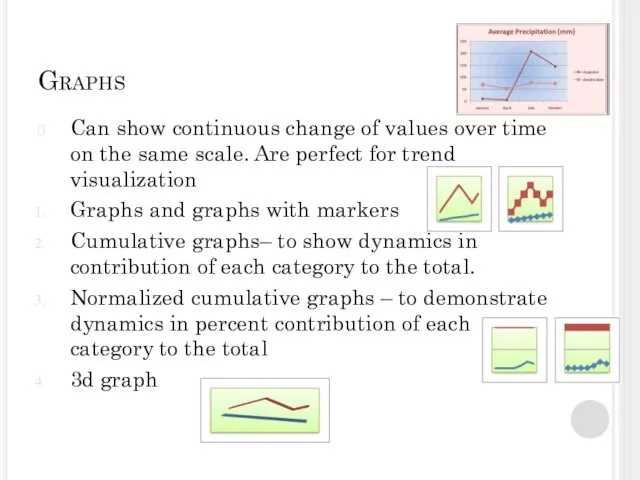
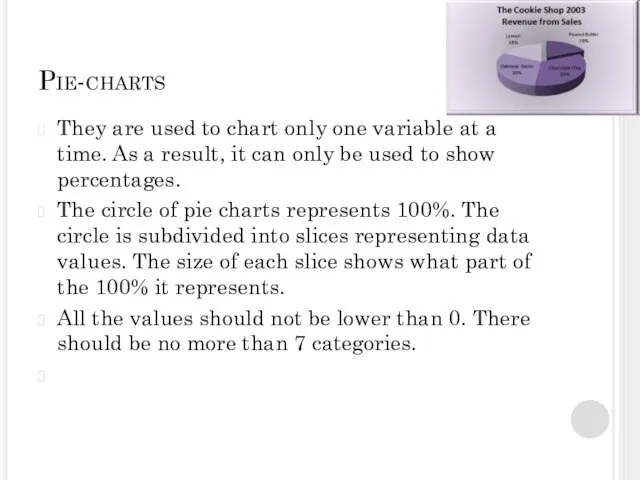
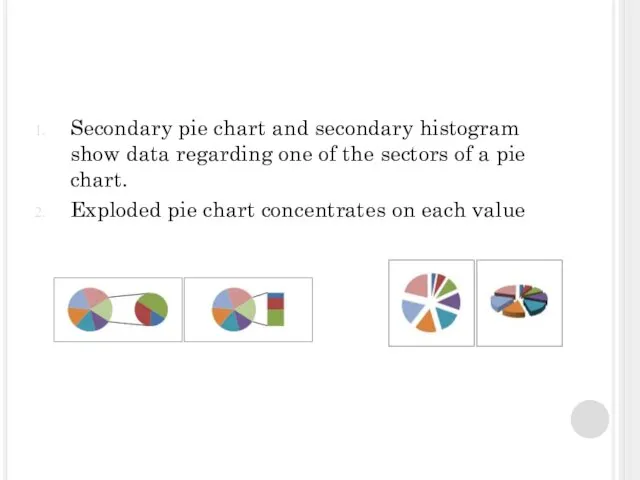
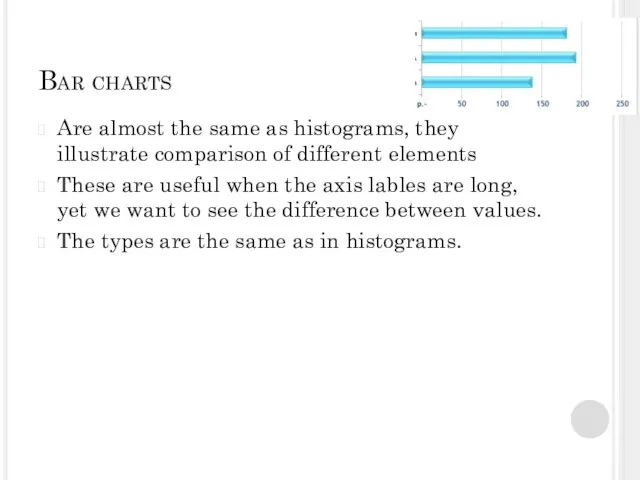
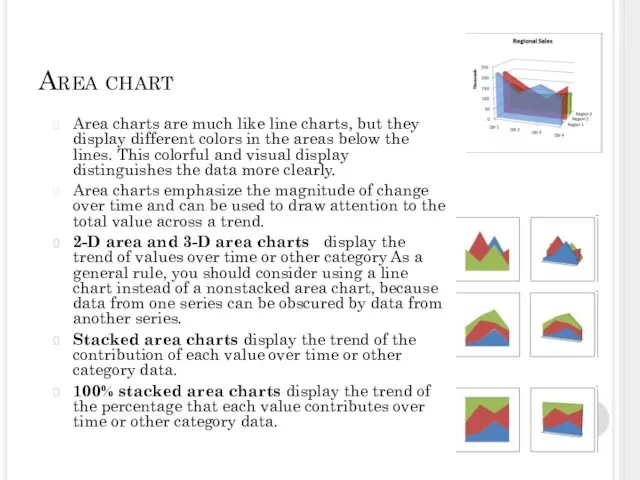

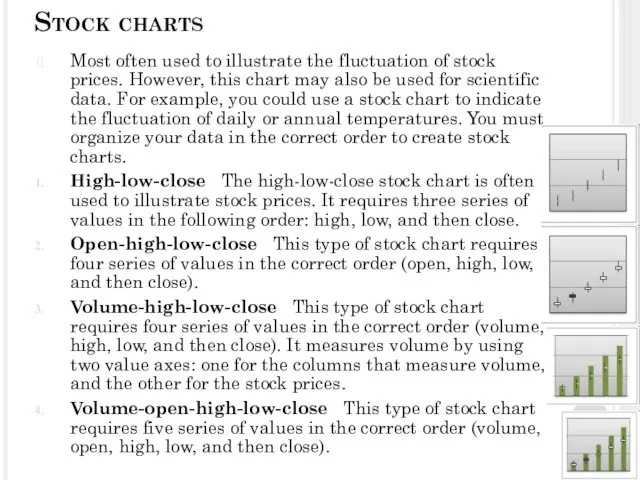
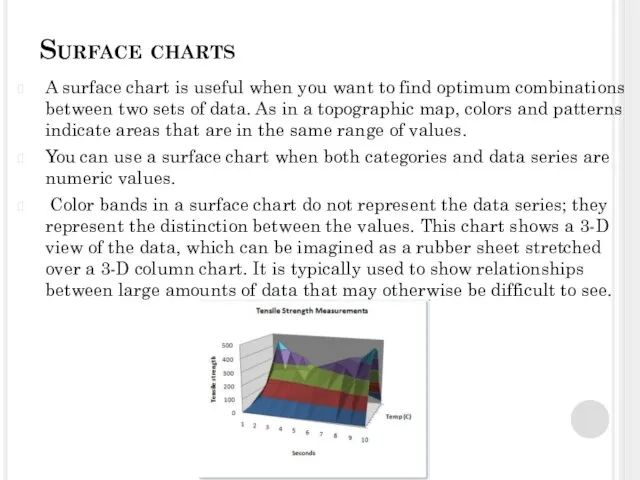


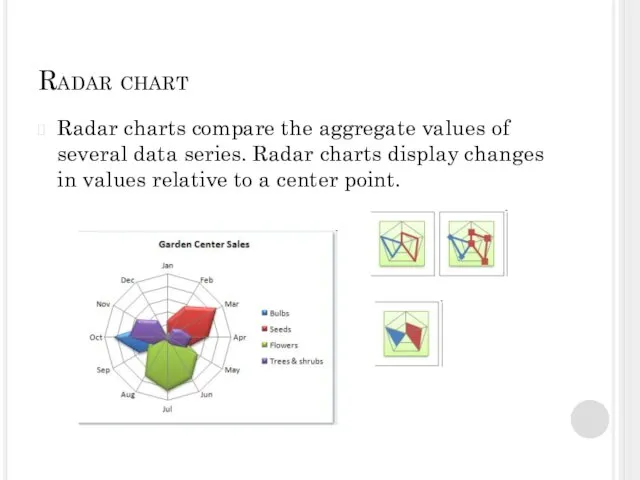
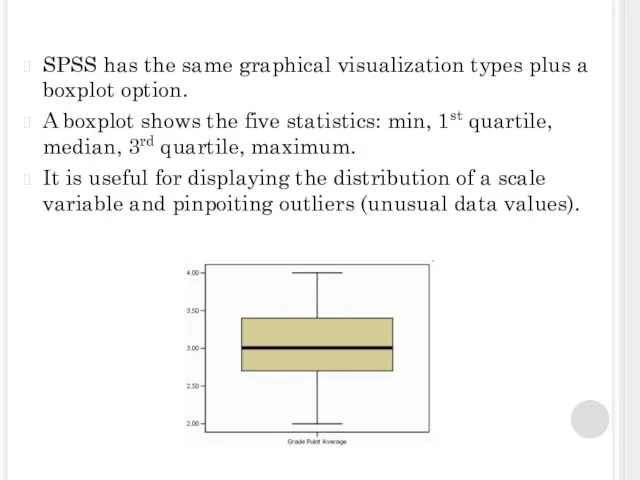
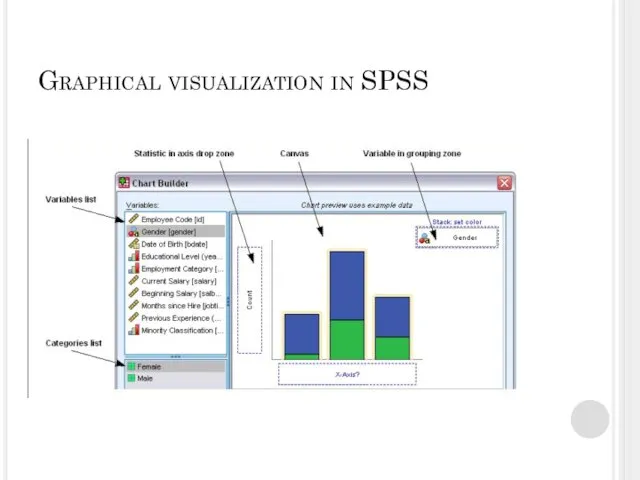
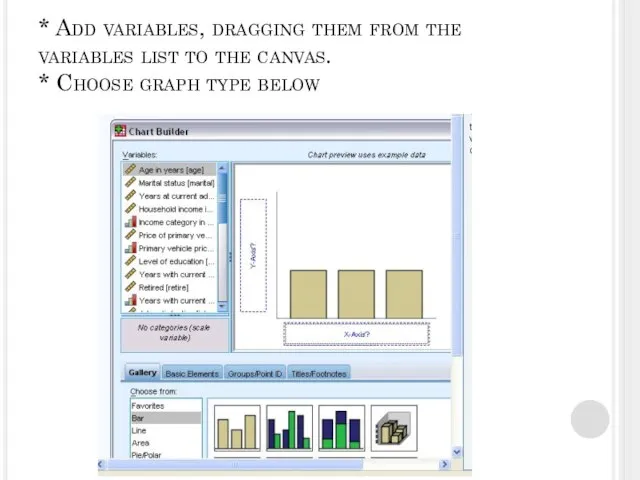

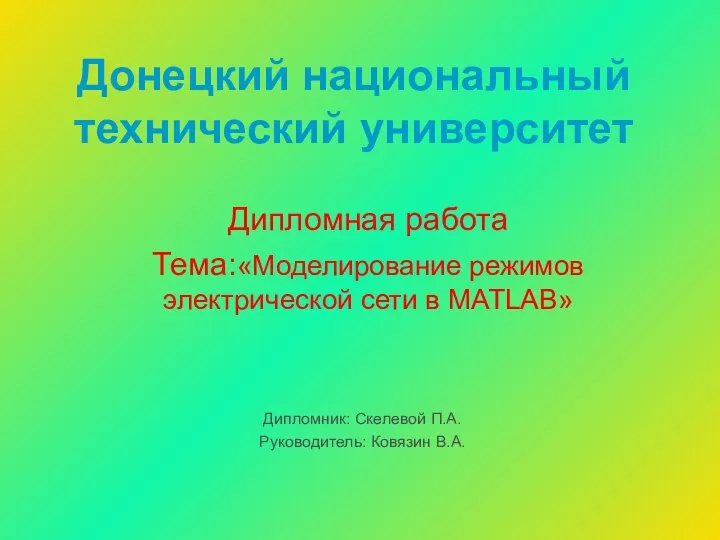 Моделирование режимов электрической сети в Mатlab
Моделирование режимов электрической сети в Mатlab Карболовая кислота
Карболовая кислота План внешних стен
План внешних стен Презентация на тему Пустынная зона в Казахстане
Презентация на тему Пустынная зона в Казахстане  Увольнение по соглашению сторон
Увольнение по соглашению сторон Анатомия целевой страницы
Анатомия целевой страницы Капуста
Капуста Prezentatsia_Ponyatie_materii_v_filosofii_Kanyukova_A_R
Prezentatsia_Ponyatie_materii_v_filosofii_Kanyukova_A_R Методы исследования ССС
Методы исследования ССС  Зачётная работа для МФК по курсу Основы предпринимательской деятельности
Зачётная работа для МФК по курсу Основы предпринимательской деятельности spetsialnoe-obrazovanie-v-afrike (1)
spetsialnoe-obrazovanie-v-afrike (1) Орфография - словарные слова
Орфография - словарные слова Пермский край
Пермский край МОУ «Рыпушкальская ООШ» дошкольные группы
МОУ «Рыпушкальская ООШ» дошкольные группы Краевые швы
Краевые швы Semantic Web как новая модель информационного пространства интернет
Semantic Web как новая модель информационного пространства интернет Дробление
Дробление Гидрофобизация минеральных систем
Гидрофобизация минеральных систем Возможные макрофизические проявления гипотетического нейтринного заряда.
Возможные макрофизические проявления гипотетического нейтринного заряда. « Школьный спортивный сертификат» на территории Пермского края ПРОЕКТ
« Школьный спортивный сертификат» на территории Пермского края ПРОЕКТ Пусть победит Иисус
Пусть победит Иисус Презентация на тему Симметрия в искусстве
Презентация на тему Симметрия в искусстве  Грамматич основа предл 8 кл
Грамматич основа предл 8 кл Каландрование
Каландрование Фразеология.
Фразеология. Студия танца Глория Лицея БГУ
Студия танца Глория Лицея БГУ Автострахование Каско
Автострахование Каско Macromedia Dreamweaver
Macromedia Dreamweaver